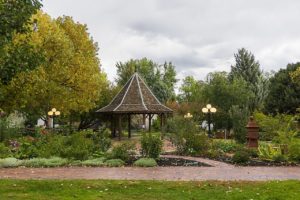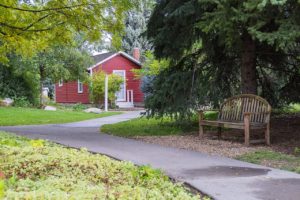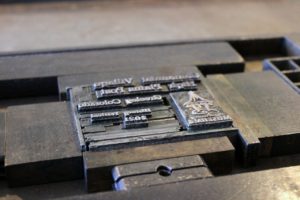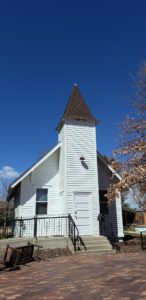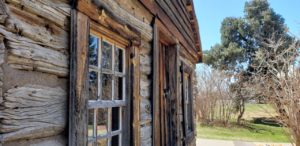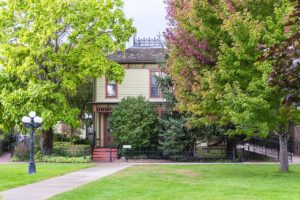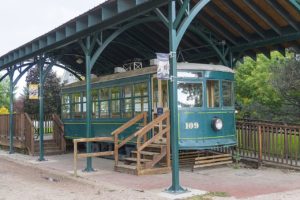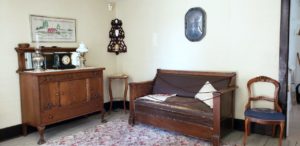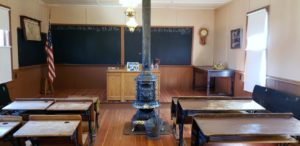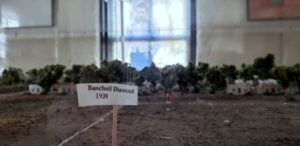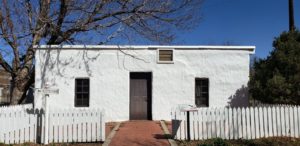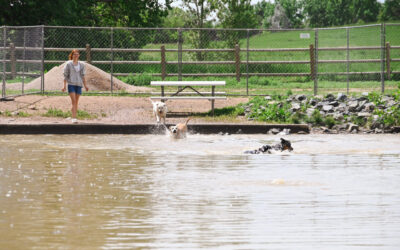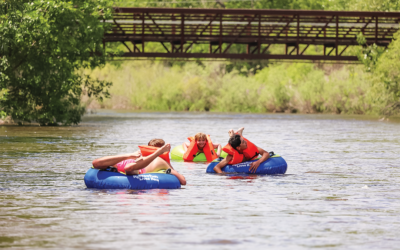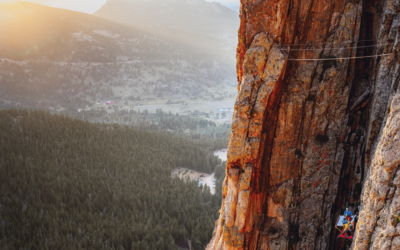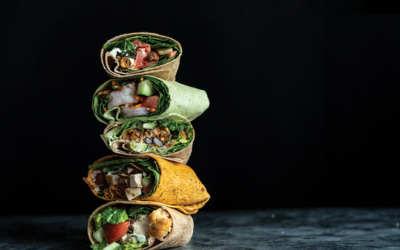By Heidi Kerr-Schlaefer | Photos by Heidi Kerr-Schlaefer
The leaves rustle overhead and the green ground smells of sweet, warm summer. A woman in the distance walks slowly in a long dress, bonnet in hand. Suddenly, a white chicken darts from behind a bush and streaks by, clucking incessantly.
The path curves to the right and the air carries the smell of fire and the sounds of metal striking metal. A blacksmithing shed comes into focus, as does the man in an apron pounding, pounding, pounding.
All senses are engaged strolling through Centennial Village Museum, where the past comes alive in a moving account of this land’s colorful history; a history marked by immigration, hardship, family and farming, always farming.
Centennial Village Museum is an arm of Greeley Museums, eight acres of more than 35 buildings small and large, most of them original to the county. It is laid out in such a way that one can literally walk through the history of Weld County.
Many of the buildings are original and have been moved from towns around the county to this spot, where they can play a role in educating the public.
As an “ambassador of the past” the museum welcomes all ages to wander the grounds during the summer months. Home to everything from historic homes to a white-steepled church, it’s impossible not to learn something while exploring here.
The church has been the scene of sermons and weddings since 1917, when it was erected in Grover, Colorado, as a Lutheran church for the town’s German residents. In 1976, when Centennial Village Museum opened, it was moved to the property.
Today, it is visited by those interested in its theological and historical significance, as well as eager brides and grooms–the church can be rented for small weddings.
Each weekend starting Memorial Day and running through Labor Day, Centennial Village comes alive with reenactors, who consist of volunteers and staff in period costumes.
House museums, like the Stevens-Reynolds House (original, circa 1900) are staffed with tour guides who are knowledgeable about everything from architecture to interiors to family stories and lore.
“The Steven-Reynolds House represents the height of Victorian living in the early 1900s,” says Geoff Haven, Curator of Historic Sites at Centennial Village. He freely admits it is one of his favorite buildings on the site.
“It’s very well set up and it is a step back in time like nothing else,” he says.
Haven is also a fan of Centennial Villages’ immigrant houses, the Hispanic Heritage House (reproduction, 1976), Grauberger Shanty (original, prior to 1930), and the Spanish Colony House (reproduction, 1993). The last holds a miniature diorama of the Great Western Sugar Company’s “tent city,” erected to house workers, the majority of whom were of Mexican descent.
Baseball teams were formed at each of these tent cities, located around the region, and they played one another in these summer-only communities. The diorama and the building offer an insider look at the lives of immigrants who called Greeley and Northern Colorado home.
Visitors will find the Bolin House (1909) in the immigrant area of the property. Constructed in Osgood, Colorado, by the second-generation Swedish Bolin family, its original single room didn’t suit the wife of the family. Eventually, the home was expanded to three rooms, where they raised their four children.
Just steps away is the oldest courthouse in Weld County, built around 1862 in Platteville. Transformed many times, it has been a school and a general store, among other things. Around the corner is a replica of Rattlesnake Kate’s house. She has been immortalized in a new musical with the same name.
On the north side of the property, there’s a reconstructed firehouse and the High Plains Press. Both fire stations and newspapers played an important role in the founding of the west, including Greeley. The working presses are used during the summer months by volunteers who help visitors make their own souvenir pressings.
While there is little doubt that Centennial Village Museum is an excellent place to bring children, it is a draw for adults, too. It is frequently visited by those who are fascinated with history and those who want to learn the trades of the past.
“We can teach you,” says Haven. “We have all the supplies here for things like blacksmithing and printmaking. You can learn the architecture and stories of the homes here and give house tours. All you need to do is commit some of your time and become a volunteer.”
A multipurpose Agricultural Heritage Building with event space is planned for Centennial Village Museum. Serving as a place to display agricultural artifacts like a potato sorter currently in storage, it will tell the story of agriculture in Greeley, a narrative that is still unfolding. More information can be found here.
Centennial Village Museum is open to the public May 27 through September 3, 2022, on Fridays and Saturdays from 10 a.m. to 4 p.m. It is available by appointment to groups on Thursdays. Admission is $8 for adults, $6 for seniors, and $5 for youth ages 3 to 17. Family and special rates are available.
Centennial Village Museum, (970) 350-9220


